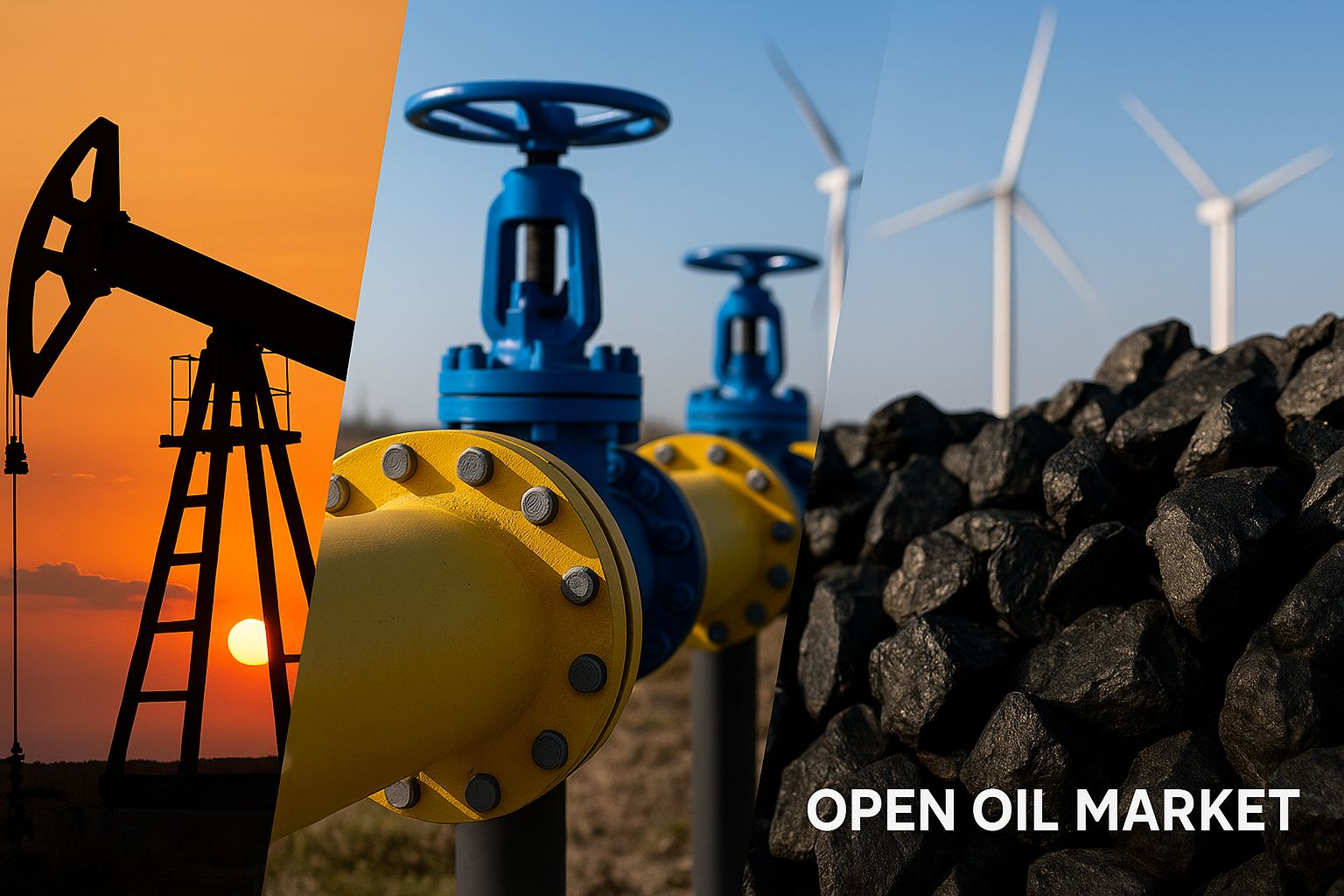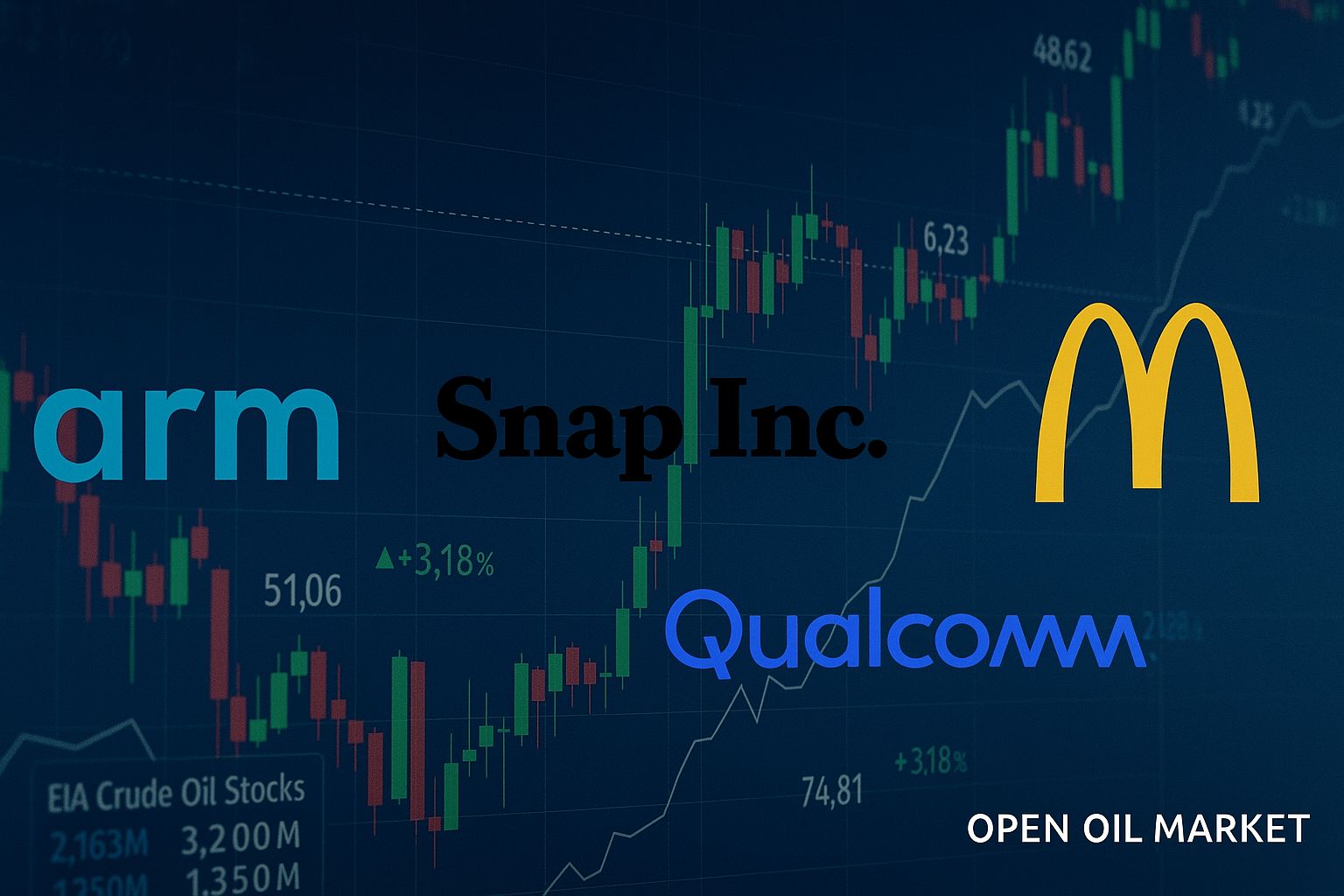
Global and Russian Fuel and Energy Sector News as of October 29, 2025: Intensified Sanction Pressure, Redistribution of Oil Flows, Comfortable Gas Reserves Ahead of Winter, Investment Boom in Renewable Energy, and Stability in the Russian Fuel Market
Current developments in the fuel and energy sector (FEC) as of October 29, 2025, are unfolding against the backdrop of ongoing geopolitical tensions and moderately stable raw material market conditions, attracting attention from investors and market participants. The sanctions confrontation between Russia and the West shows no signs of easing: this week, the United States imposed new sanctions against major Russian oil companies, tightening restrictions on the Russian oil and gas sector even further. Major consumers are revisiting their cooperation with Russia – India, for instance, has expressed a willingness to gradually reduce purchases of Russian oil. Meanwhile, global oil and gas markets are exhibiting relatively stable dynamics: oil prices remain close to multi-month lows due to expectations of oversupply by the end of the year, while the gas market is entering winter with comfortable fuel reserves in storage, providing a favorable backdrop for consumers. The global energy transition is gaining momentum – investments in renewable energy are reaching record levels, although oil, gas, and coal still constitute the foundation of global energy supply. In Russia, emergency measures to stabilize the domestic fuel market have already reduced shortages and lowered wholesale prices, although the situation in certain regions still requires attention. Below is a detailed overview of key news and trends in the oil and gas markets, as well as the state of the domestic fuel market as of the current date.
Oil Market: New Sanctions, Export Redistribution, and Low Prices
Global oil prices remain at depressed levels, close to recent lows. The North Sea Brent is trading around $60 per barrel, while American WTI hovers between $57 and $59. Following a brief rally in September, the market has shifted back to a downward trend: participants are anticipating a scenario where oil supply will exceed demand in Q4. At the same time, geopolitical tensions prevent prices from falling substantially below current levels. The situation is influenced by several factors:
- Overproduction and Demand Slowdown. OPEC+ continues to incrementally increase production, while the U.S. and Brazil have reached record oil output. The pace of global demand growth has slowed: the forecast stands at approximately +0.7 million barrels per day in 2025 (down from over +2 million in 2023), leading to inventory build-up and putting downward pressure on prices.
- Sanction Pressure and Risks. New Western restrictions are creating uncertainty in oil trade. The U.S. has effectively blocked cooperation with leading Russian oil companies, forcing buyers to restructure supply chains for Russian crude. Additionally, drone attacks on oil infrastructure in Russia are causing temporary production halts. Any intensification of sanctions or unforeseen events at major fields could cut supply and trigger price spikes.
Thus, the oil market is balancing between the pressure of fundamental factors and political risks. The oversupply keeps prices muted, but sanction-related shocks and trade adjustments prevent quotes from plummeting further. Market participants and oil companies are proceeding cautiously, considering the scenario of oil excess while also anticipating the potential for new geopolitical shocks.
Natural Gas: Confident Start to Winter, Low Prices, and Eastern Reorientation
The gas market presents a favorable scenario for consumers. Europe enters the heating season with almost record fuel storage levels: underground gas storage is filled to over 90%, creating a solid buffer against potential cold spells. A mild autumn and active gas injection during the summer have allowed the necessary volumes to be accumulated without crises. As a result, wholesale gas prices in the EU remain low: the TTF index is stabilizing around €30–35 per MWh, significantly lower than the peaks seen in 2022. The risk of a repeat of last year's gas crisis has notably decreased, although much will depend on winter weather and uninterrupted LNG supplies.
- Europe is Ready for Winter. EU storage facilities are over 90% full, providing a robust buffer against cold snaps. Gas consumption remains moderate: the EU economy is growing slowly, and power generation from renewables was high in the autumn, reducing natural gas usage in power plants.
- Record LNG Imports. European countries are continuing to ramp up liquefied natural gas (LNG) purchases. The softening demand for LNG in Asia has freed up additional volumes for Europe. Suppliers from the U.S., Qatar, and other countries have maximized export capabilities, delivering fuel to the EU. The high influx of LNG compensates for almost the complete cessation of pipeline supplies from Russia and covers declines in output from North Sea fields. LNG imports are keeping the market balanced and preventing sharp price fluctuations.
- Shift to the East. Having lost the European market, Russia is increasing gas exports to Asia. Transport volumes through the Power of Siberia pipeline to China reached record levels in 2025 (nearly 22 billion cubic meters per year). Moscow is also advancing the Power of Siberia-2 project through Mongolia, aiming to partially replace the lost European supplies by the end of the decade. Additionally, new LNG liquefaction capacities have been introduced in Yamal and Sakhalin – additional LNG shipments are directed to China, India, and other Asian countries. Despite these moves, total Russian gas exports remain below pre-sanction levels, as domestic supply and obligations to close allies take priority.
Thus, the global gas sector is entering winter in a relatively balanced state. Europe has an unprecedented "safety cushion" in reserves, significantly reducing the likelihood of price shocks – although they cannot be entirely ruled out. At the same time, the geography of global gas trade has radically changed: the EU has practically abandoned Russian pipeline gas, while Russia has shifted towards Asian markets. Investors and market participants are closely monitoring the rollout of new LNG facilities and infrastructure agreements, recognizing that the global gas landscape continues to evolve rapidly.
Russian Fuel Market: Stabilization and Price Control
By fall 2025, the situation in the domestic fuel market in Russia has noticeably stabilized following the crisis of late summer. In September, numerous regions experienced acute shortages of gasoline and diesel fuel due to a surge in seasonal demand and reduced supply from refineries (scheduled repairs, accidents, and drone attacks). By mid-October, thanks to emergency government measures, the fuel shortages were significantly alleviated. Wholesale prices for gasoline and diesel have retreated from record highs, and independent gas stations have resumed normal operations. Nevertheless, to prevent a new round of the fuel crisis, the government has extended and expanded several measures:
- Export Restrictions. The complete ban on gasoline exports has been extended until December 31, 2025. Until the end of the year, restrictions on diesel fuel exports remain in place: independent traders are prohibited from exporting diesel, while oil companies with refineries are only permitted to export a limited amount under government oversight.
- Support for Refineries. Authorities have maintained payments to oil refineries, compensating for the difference between the export and domestic fuel prices to stimulate supplies to domestic gas stations. Oil companies have also been advised to postpone non-essential repairs and increase processing to boost gasoline and diesel production ahead of winter.
- Import and Prices. To eliminate the shortage, fuel imports have been eased: import duties on gasoline and diesel have been waived until mid-2026, allowing for resource acquisition from abroad if necessary. Simultaneously, price monitoring has intensified – the Federal Antimonopoly Service has issued warnings to major fuel networks for attempts at unjustifiable price increases. The government is avoiding direct price freezes, relying on market mechanisms (dampening, transportation subsidies, and curtailing speculation).
The set of measures has already yielded results. By the end of October, gasoline and diesel production in Russia had returned to normal levels – aided by the completion of unscheduled repairs at refineries and the redirection of some export volumes to the domestic market. Fuel supplies at gas stations in most regions are again ensured. The government hopes to navigate winter without major supply disruptions, although specific challenges in remote areas cannot be excluded. Ensuring the domestic market remains a priority: export restrictions will only be eased after the country is fully saturated with fuel and necessary reserves are formed. Even in the face of external pressures and price volatility, domestic fuel supply will remain stable, and a new crisis will be averted.




